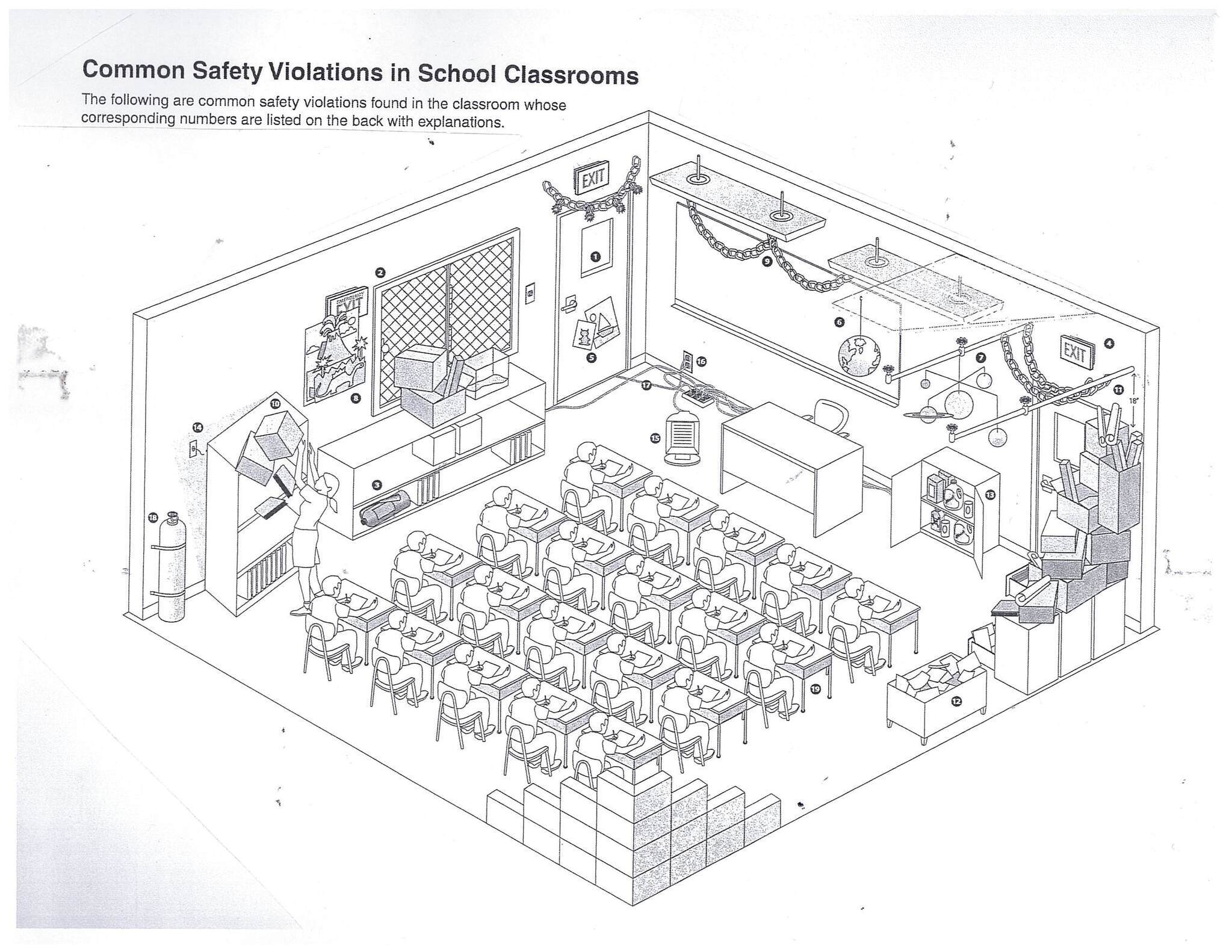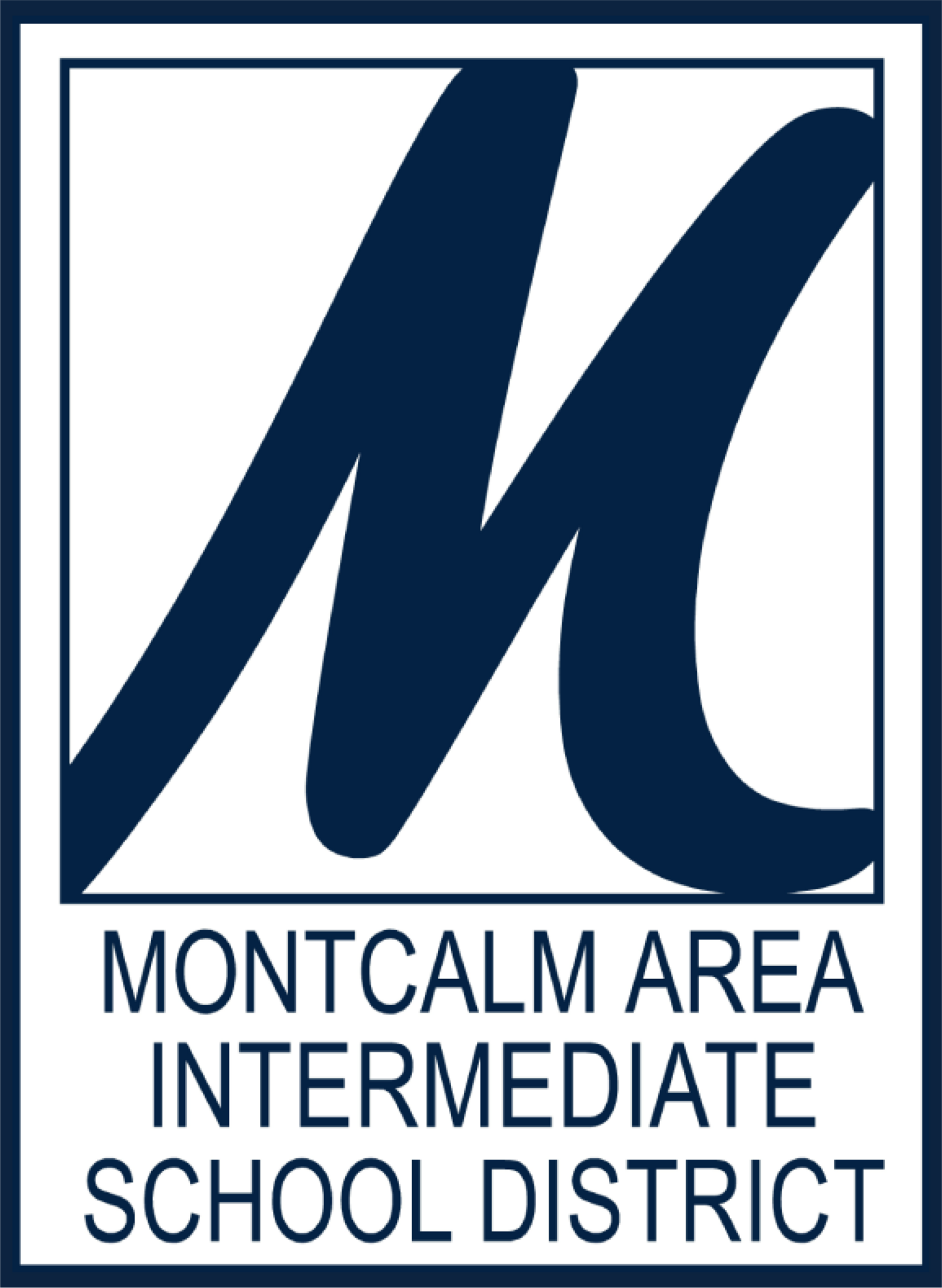Frequently Asked Questions
What's allowed in my classroom?
The facilities department is often asked what items can be brought into classrooms. We would like to remind everyone of some important items. They are fire safety issues and other requirements that are important to the safety of our students and staff. These items also keep us in compliance with many local, state, and federal laws as well as District Policies.

- Classroom exits shall remain clean and not blocked by any obstructions, such as cabinets that open into the exit path. You MUST keep a clear passage of at least 36" to the door. This is law and is not negotiable.
- Classroom emergency windows shall not be blocked by items stored under or in front of windows.
- Classroom fire extinguishers if applicable shall be mounted in plain view and not blocked or hidden.
- Exit signs for emergency exits must be visible at all times.
- Classroom exit doors shall not have decorations on them that prevent the door from safely opening.
- Decorations or classroom materials that are suspended from the ceilings shall be temporary. Decorations shall not block view of exit signs and must remain clear of all sprinkler heads.
- Suspending of hanging decorative items from fire sprinkler heads is not allowed.
- Classroom wall decorations shall not extend out from the walls or cover exit signs.
- Suspending decorative or instructional items from classroom ceiling lights is not allowed.
- Material stored on top of shelves or cabinets may not be closer than 36" to the ceiling.
- Materials stored on top of shelves or cabinets must not be closer than 18" to automatic sprinkler heads.
- Excess paper and other supplies, shall be stored in an orderly manner in approved storage closets and not in open classrooms.
- Hazardous materials, such as cleaning products and chemicals used for instruction, shall be stored in approved secure locations and always kept out of reach of children. Any products and chemicals brought into the classroom MUST have an SDS sheet submitted to the facilities department before hand.
- All bookcases and cabinets shall be secured and unable to tip.
- Approved portable heaters shall be positioned so that they are not close to combustibles and MUST NEVER be plugged into a power strip or extension cord. Heaters shall be unplugged after use every day.
- Do not plug more than one extension cord and one power strip into an electrical outlet. Extension ,cords shall be removed and stored at the end of the school day. Extension cords may not be put into permanent use. Extension cords and power strips may not be plugged into series.
- Extension cords may not be extended from one room to another or create a tripping hazard.
- All compressed gas cylinders shall be attached with restraints to prevent them from overturning.
- Do not exceed the classroom occupancy load by putting to many students or desk in the room.
Most classroom safety violations can be avoided by keeping classrooms clean, neat and well organized. Do not try and store more materials than your room was designed to safely handle. Do not obstruct the existing fire safety systems that are there to protect all occupants. Do not try and exceed the capacity of the room's electrical system with plug strips and extension cords. always look out for conditions that have the potential to hurt students. NEVER HESITATE TO CONTACT faculties IF A SAFETY CONCERN ARISES.
In addition to the illustrated classroom violations, there are some fire/safety violations that occur outside of the classroom. If you notice any of the following, please notify your building head and facilities.
When storing items in closets or workrooms, maintain a 3 foot clearance around all water heaters, electrical panels, fire alarms and portable fire extinguishers.
Parking of vehicles on campus shall be limited to official parking stalls only. Do not park vehicles on school grounds in such a way as to block paths or egress and access or any fire lanes.
How can I adjust the temperature of my room?
Many of our rooms throughout the district have their own individual thermostats located in the room. Each thermostat can be adjusted 2 degrees warmer or 2 degrees cooler from the setpoint.
For example, if the room has a setpoint of 70 degrees and the dial on your thermostat is centered, your room should maintain a temperature of 70 degrees. However, you can adjust that temperature up or down 2 degrees by turning the dial on your thermostat.
If you feel that after making adjustments yourself, that you room still is too hot or too cold, please submit a work ticket.
Space heaters, are they allowed?
Montcalm Area Intermediate School District Facilities Maintenance Department does not provide space heaters for individual use inside of district buildings and classrooms.
The Facilities Maintenance Department has a limited number of space heaters that are used in emergency heat situations such as when a heating unit is out of service due to necessary repairs or replacement. These space heaters are clearly labeled "MAISD Maintenance" and must be returned to the Facilitates Maintenance Department once normal heat is restored.
The Montcalm Area Intermediate School District currently does not prohibit the use of personal space heaters brought in by individuals as long as the following best practices set from our Set Seg Insurance Risk Control Representative are followed.
- Space heaters must be UL approved for their intended use.
- Space heaters should be at least 36" from combustible materials - including paper/cardboard, furniture, wood, etc.
- Space heaters should not be placed under desks or in other confined areas.
- Space heaters must be plugged directly into a receptacle, never an extension cord or power strip.
- Space heaters must have "tip protection" - the heater must turn off automatically if tipped over.
- Space heaters must have a thermostat to automatically shut down when the desired temperature is achieved.
- Space heaters need to be monitored, never used when unattended.
- Space heaters must be in proper working conditions - take out of service a heater that is missing guards, control knobs, feet, or other parts.






